Western Spain travel guide
This is a short guide to know Extremadura, a wide region located in western Spain, just 2 hours from Madrid. Incredible ancient monuments, many nature reserves, low population and rural traditions.. Extremadura is a place to get lost.
Extremadura is a beautiful region of Spain, located in the west, just in the border with Portugal.
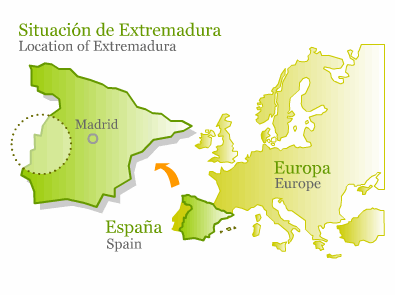
History
Since first settlers arrived to this land (many thousands years ago) this region was always a very valued place, located in an strategic area, with a relatively smooth climate and a perfect land for farming and stockbreeding.
Many cultures and civilizations have lived in this land: prehistoric civilizations, pre-Roman cultures, Romans, Visigods, Arabs, Cristian..
In Extremadura, numerous remains and prehistoric sites can be found, including dolmens, pre-Roman defensive enclosures, and structures from the Tartessan culture (linked to the Phoenicians)…
Throughout Extremadura, one can also encounter various monuments from ancient Rome. Extremadura was part of the Roman provinces of Lusitania and Baetica.
Especially in Mérida, Augusta Emerita, the capital of Roman Lusitania, preserves one of the most significant Roman historical heritages in Europe.
Subsequently, the arrival of the Muslims and their nearly eight centuries of presence left a very important architectural legacy.
During the 13th century, these lands were reconquered by Christian forces, including military orders such as the Order of Santiago or the Knights Templar.
Numerous castles, churches, and defensive monuments from this medieval and Renaissance period can be found. Cities like Cáceres or Trujillo, for instance, boast highly significant medieval architectural heritage worth visiting.
These locations serve as the backdrop for numerous films and series set in the medieval era.
Nature
In the 19th and early 20th centuries, Extremadura experienced limited industrialization and maintained a low population density. These factors have contributed to the preservation of the region’s original nature and traditional farming lands, particularly the expansive wood pastures known as “dehesas.”
Extremadura, located in Western Europe, boasts the highest percentage of important Bird Areas (known as ZEPA in Spain - Zone of special protection for birds), making it a perfect destination for birdwatching enthusiasts.
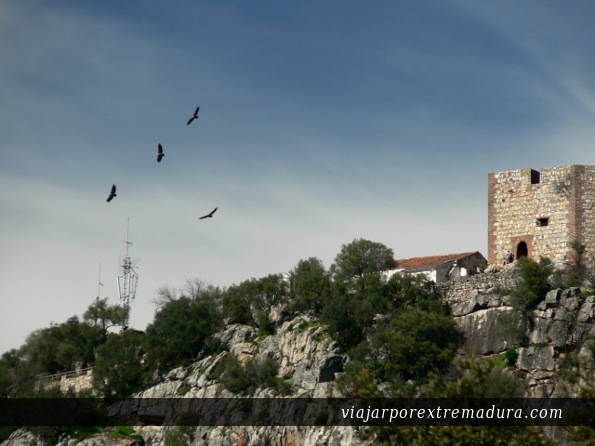
The region comprises two provinces: Cáceres in the north and Badajoz in the south, each with its unique culture, traditions, history, monuments, and gastronomy.
Yoy can explore the various regional zones to discover the richness and diversity that define Extremadura.
Climate
Winter in this region is characterized by a relatively mild climate due to its Mediterranean influence and by the proximity of the Atlantic coast of Portugal.
While the northern areas of Cáceres and the mountain ranges around Guadalupe (located to the east) may experience lower temperatures, the overall winter average exceeds 8ºC.
Summers, on the other hand, bring hot and dry conditions, with temperatures occasionally soaring up to 40ºC, particularly in Badajoz, situated in the southern part of Extremadura.
The landscape in many parts of Extremadura undergoes a radical transformation between seasons, transitioning from lush green steppes in the cooler months to dry and ochre-toned landscapes with the arrival of summer.
Each season has its own charm.
Spring and autumn are typically periods when nature reaches its full splendor, and the weather is more pleasant for hiking or visiting the numerous natural parks and tourist routes.
So, where to go..
There are so many options…
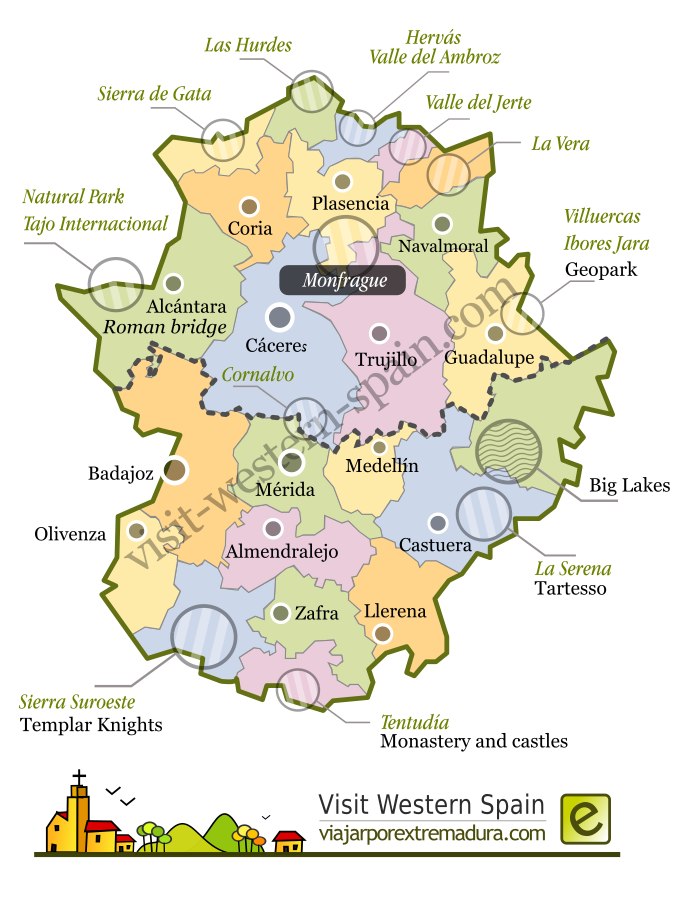
Culture / history
If you like culture and history, you could visit the World Heritage Triangle (World Heritage Cities of Extremadura):
- The city of Cáceres and its impressive Medieval Town
- The charming town of Guadalupe and the Monastery of Guadalupe
- Mérida, the ancient Augusta Emerita, where you can travel back in time to explore the Roman culture
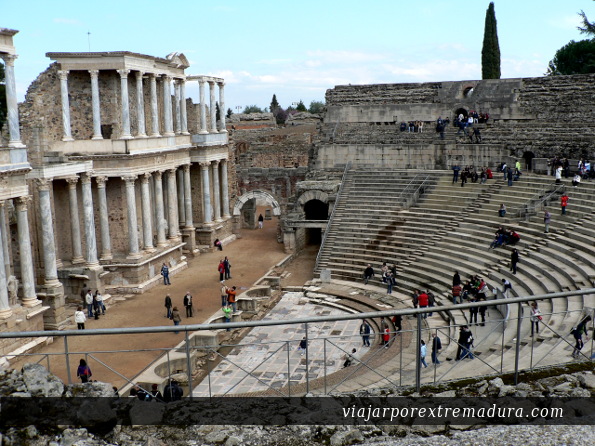
Other places you must visit on your cultural trip:
- Explore the city of Trujillo. The old town of Trujillo boasts medieval and Renaissance buildings, including the impressive Arab castle and beautiful medieval churches.
- Visit the city of Plasencia, where you can admire two cathedrals, known as the Old and the New Cathedral.
- Discover the Roman Bridge of Alcántara.
- Explore the city of Badajoz, featuring an impressive Arab fortress (Alcazaba de Badajoz), the Cathedral, and its beautiful modern surroundings.
- If you’re interested in Templar Knights, don’t miss Jerez de los Caballeros in the southwest of Badajoz province.
Nature and birding
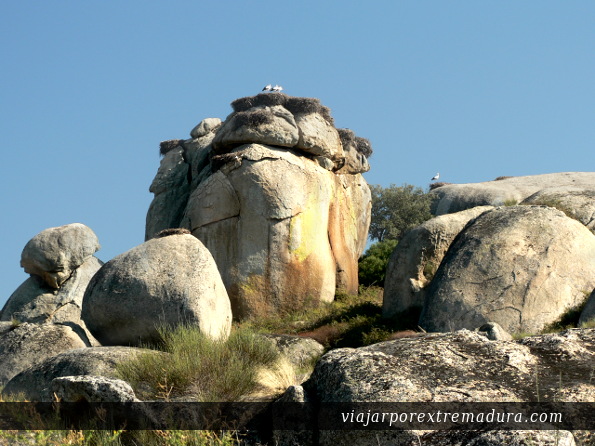
If you like nature, birding or hiking, take a look to some of those beautiful places of Western Spain:
- The Monfrague National Park, one of the best places for birdwatching in Europe.
- The Natural Park of Cornalvo, near Merida.
- The Barruecos natural park, near Caceres city.
- Plains and big lakes in Badajoz province
- Villuercas-Ibores-Jara Geopark
Landscapes and relax
There are many many places to enjoy nature and relax.
Almost every little town in Extremadura has it’s own charm and a slow lifestyle.
Theese are some known areas width beautiful landscapes and :
Where to stay..
If you are looking for nature and relax, you can find beautiful places for every seasons in the north of Caceres province:
If you want to visit everything as posible, or you like to stay in a city, maybe you could choose Plasencia, Caceres or Merida, because all of them are located in the A66 highway that connects Extremadura from north to south.
So you can plan your daily trips from these cities to every other place of Extremadura:
- To stay in Merida
- Caceres has also a wide offer of hotels and apartments
- And Plasencia is the perfect place to stay if you want to visit the north of Extremadura
